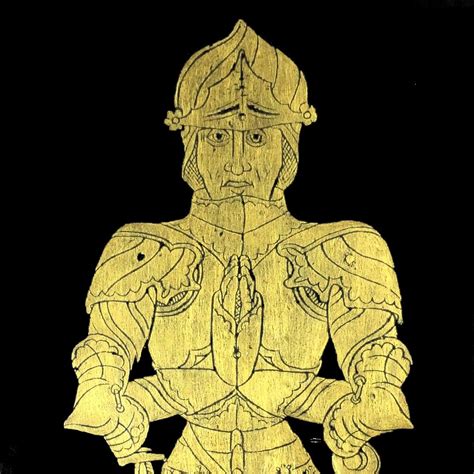Brass Rubbing Knight

The intricate world of brass rubbing, a hobby that has been captivating enthusiasts for centuries, particularly those with a fascination for historical artifacts and the medieval period. Among the myriad of brass rubbings that adorn the walls of churches, cathedrals, and museums, one figure stands out - the knight. The image of a knight, often portrayed in full armor, has become an iconic symbol of chivalry, honor, and valor. But what does the process of creating a brass rubbing entail, and what significance do these images hold in the context of historical preservation and appreciation?
Introduction to Brass Rubbings
Brass rubbings are, essentially, detailed imprints of memorial brasses - flat plates made of brass that were used to commemorate the deceased, often with elaborate engravings depicting the person, their family, coats of arms, and other symbols relevant to their status or profession. The process of creating a brass rubbing involves placing a sheet of paper over the brass plate and rubbing it gently with a wax block or a similar tool, ensuring that the paper picks up the details of the engraving. This technique allows for the reproduction of the intricate designs found on these brasses, providing a tangible connection to the past.
The Significance of Knights in Brass Rubbings
Knights, as depicted in brass rubbings, are typically shown in elaborate armor, which not only signifies their profession but also their social status. The armor itself is a testament to the craftsmanship of medieval blacksmiths, with each piece carefully designed for both functionality and aesthetic appeal. The portrayal of knights in these rubbings also speaks to the ideals of the time - chivalry, loyalty, and the defense of the realm. These images serve as a window into the past, offering insights into the values and beliefs of medieval society.
Historical Preservation and Appreciation
The act of creating brass rubbings contributes significantly to the preservation of historical artifacts. Memorial brasses, over time, can deteriorate due to environmental factors, human interference, or sheer neglect. By creating rubbings of these brasses, enthusiasts and historians can help preserve the images and information they contain, ensuring that future generations can learn from and appreciate these artifacts. Moreover, the process of brass rubbing encourages a deeper engagement with history, fostering a sense of connection between the past and the present.
The Artistic and Educational Value
Beyond their historical significance, brass rubbings also hold artistic and educational value. The intricate details and the craftsmanship that go into creating these images make them pieces of art in their own right. Educational institutions and museums often use brass rubbings as teaching tools, providing a tactile and visual means of exploring history. They offer a unique blend of art, history, and culture, making them invaluable resources for scholars and enthusiasts alike.
The Future of Brass Rubbing
As technology advances, new methods of preserving and reproducing historical artifacts have emerged, including digital scanning and 3D printing. While these technologies offer unprecedented levels of detail and accuracy, they cannot replace the tactile experience and emotional connection one derives from physically engaging with a brass rubbing. The future of brass rubbing, therefore, lies in finding a balance between traditional techniques and modern technology, ensuring that this historical craft continues to thrive and contribute to our understanding and appreciation of the past.
Conclusion
The image of a knight in brass rubbings embodies the essence of medieval chivalry and the craftsmanship of a bygone era. Through the process of creating these rubbings, individuals can engage with history in a meaningful way, contributing to the preservation of artifacts and fostering a deeper appreciation for the cultural and artistic heritage they represent. As we move forward, embracing both traditional techniques and modern innovations, the significance of brass rubbings - and the stories they tell of knights and other figures from history - will continue to captivate and educate, serving as a lasting testament to the power of art and history to connect us across time and space.
What is the primary purpose of creating brass rubbings?
+The primary purpose of creating brass rubbings is to preserve the images and information contained on memorial brasses, which can deteriorate over time, thereby contributing to historical preservation and appreciation.
How does the depiction of knights in brass rubbings reflect medieval values?
+The depiction of knights in brass rubbings, often in elaborate armor, reflects the medieval values of chivalry, loyalty, and the defense of the realm, showcasing the social status and profession of the individual commemorated.
What role can modern technology play in the preservation and reproduction of brass rubbings?
+Modern technology, including digital scanning and 3D printing, can offer high levels of detail and accuracy in preserving and reproducing brass rubbings, but it should be used in conjunction with traditional techniques to maintain the tactile experience and emotional connection provided by physical brass rubbings.
